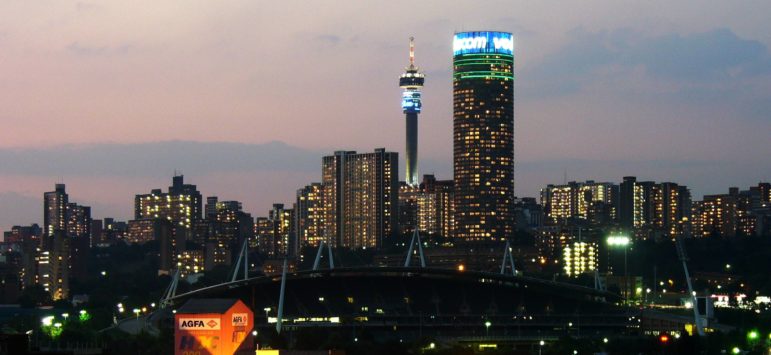 Johannesburg is one of the largest cities in Africa, with more than 4.4 million people calling this bustling metropolis home. Joburg, or Jozi as some prefer to call it, offers visitors a unique and diverse array of experience. Some call Joburg Africa’s most exciting city, with a style, energy and enthusiasm all its own.
Johannesburg is one of the largest cities in Africa, with more than 4.4 million people calling this bustling metropolis home. Joburg, or Jozi as some prefer to call it, offers visitors a unique and diverse array of experience. Some call Joburg Africa’s most exciting city, with a style, energy and enthusiasm all its own.
The best guide to the city is 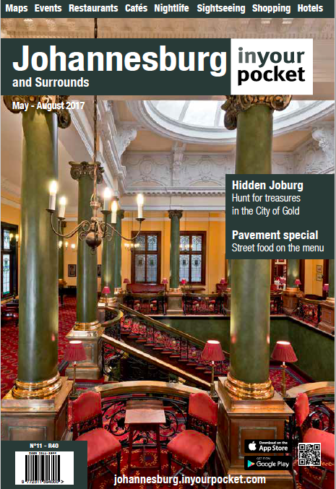 Johannesburg in Your Pocket, which is free to access online and is also downloadable with regular updates. Their highly-curated selection includes recommendations of the city’s unmissable sights as well as ideas for eating, drinking, shopping and sorts information by neighborhood to help you get the most out of your travel in the city.
Johannesburg in Your Pocket, which is free to access online and is also downloadable with regular updates. Their highly-curated selection includes recommendations of the city’s unmissable sights as well as ideas for eating, drinking, shopping and sorts information by neighborhood to help you get the most out of your travel in the city.
Familiarize yourself with their write ups of Braamfontein — which is where Wits University is located — as well as the suburb of Rosebank, a tourist hotspot where the main conference hotel is located along with the Keyes Art Mile, which is home to many of the city’s top art galleries. The guide also offers quality information on the neighborhoods of Soweto, Melville, Maboneng and Sandton.
For the foodies, check out Eat Out for dining options wherever you find yourself in South Africa.
Top Tourist Attractions in Johannesburg
Constitution Hill
 Johannesburg is a booming, happening place and the area close to City Hall and Newtown Cultural Precinct, which has completely transformed the Market Theatre and surrounds, now forms the heart of urban revival.
Johannesburg is a booming, happening place and the area close to City Hall and Newtown Cultural Precinct, which has completely transformed the Market Theatre and surrounds, now forms the heart of urban revival.
Constitution Hill is a living museum that tells the story of South Africa’s journey to democracy. The site is a former prison and military fort that bears testament to South Africa’s turbulent past and, today, is home to the country’s Constitutional Court, which endorses the rights of all citizens.
Soweto and Apartheid Museum
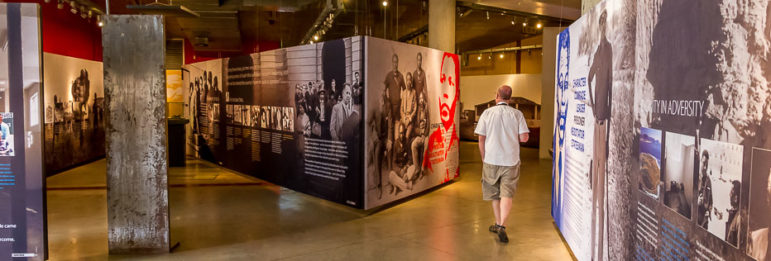
Soweto is a cluster of townships on the south-western flank of Johannesburg and was created in the 1930s. It is the biggest black urban settlement in Africa, with a rich political history. A visit to Soweto is usually paired with a stop at the Apartheid Museum for an in-depth look at 20th Century South Africa, at the heart of which is the apartheid story.
Maropeng and the Cradle of Humankind
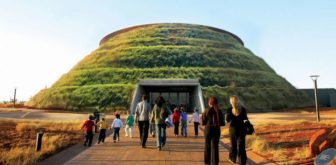 Maropeng is the official visitor centre of the Cradle of Humankind and the Sterkfontein Caves. Maropeng means “returning to the place of origin” in Setswana, the main indigenous language in this area of South Africa. The Cradle of Humankind World Heritage Site is an easy drive of about an hour from Johannesburg. Our ancestors have lived in this area for more than 3-million years.
Maropeng is the official visitor centre of the Cradle of Humankind and the Sterkfontein Caves. Maropeng means “returning to the place of origin” in Setswana, the main indigenous language in this area of South Africa. The Cradle of Humankind World Heritage Site is an easy drive of about an hour from Johannesburg. Our ancestors have lived in this area for more than 3-million years.
Pilansberg Game Reserve
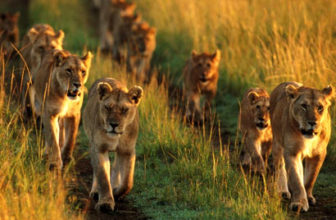 Pilanesberg National Park is the fourth largest park in South Africa. Set on 55,000 hectares of pristine unspoiled natural beauty, the park is situated in the North West Province, about 2-1/2 hours from Johannesburg. The area is world-famous geologically; its structure, termed the Pilanesberg National Park Alkaline Ring Complex, was formed by volcanic eruptions some 1.2 billion years ago. Apart from the “Big Five” animals (lion, elephant, leopard, Cape buffalo, and rhinoceros) you may find cheetah, hippo, crocodile and even sable during your drive.
Pilanesberg National Park is the fourth largest park in South Africa. Set on 55,000 hectares of pristine unspoiled natural beauty, the park is situated in the North West Province, about 2-1/2 hours from Johannesburg. The area is world-famous geologically; its structure, termed the Pilanesberg National Park Alkaline Ring Complex, was formed by volcanic eruptions some 1.2 billion years ago. Apart from the “Big Five” animals (lion, elephant, leopard, Cape buffalo, and rhinoceros) you may find cheetah, hippo, crocodile and even sable during your drive.
Top Tourist Attractions Across the Country
Cape Town Cape Town is one of the most popular tourist destinations in the world. The city is a rare cultural gem, resulting from the amalgamation of Indonesian, French, Dutch, British and German settlers, the local Bushmen and Hottentot tribes, and the Bantu tribes from the North.
Cape Town is one of the most popular tourist destinations in the world. The city is a rare cultural gem, resulting from the amalgamation of Indonesian, French, Dutch, British and German settlers, the local Bushmen and Hottentot tribes, and the Bantu tribes from the North.
The impressive presence of Table Mountain, flanked by the legendary Devil’s Peak and historical Signal Hill, stands proudly above the city. Beautiful white sandy beaches along a peaceful coastline frame the Cape Peninsula which is famous for its unique floral kingdom, bountiful rivers, lakes and dams, and scenic countryside. The surrounding area extends far into South Africa’s wine country, the Winelands, green in summer and red-gold in autumn.
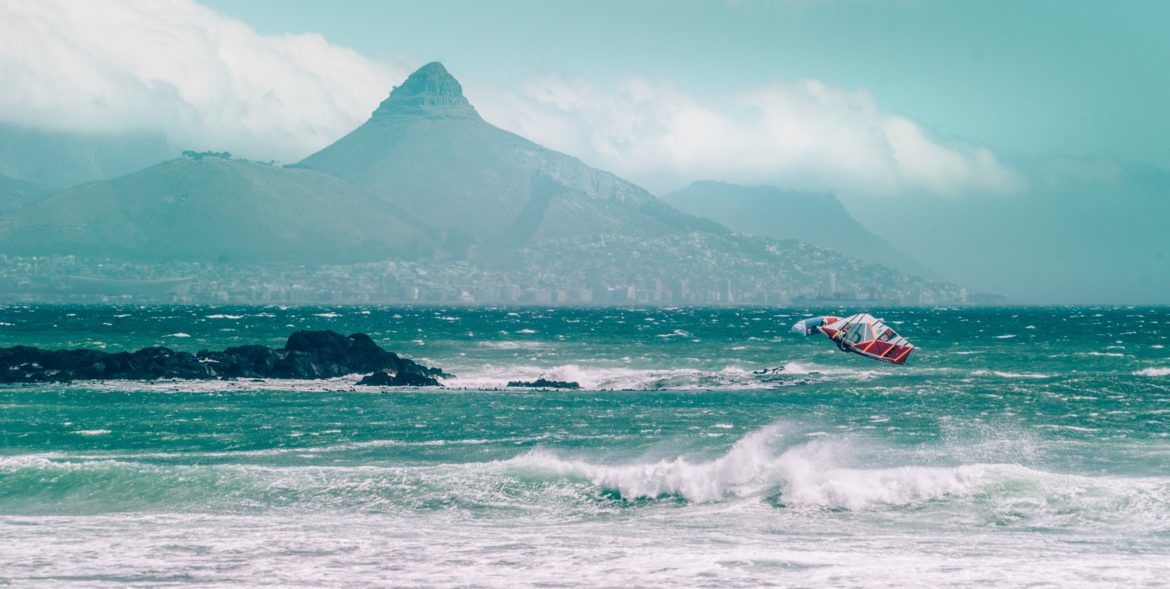
Discover Cape Town & Western Cape and I Love Cape Town are both well-curated websites which will help you navigate the basics of the city and the surrounding areas.
Table Mountain
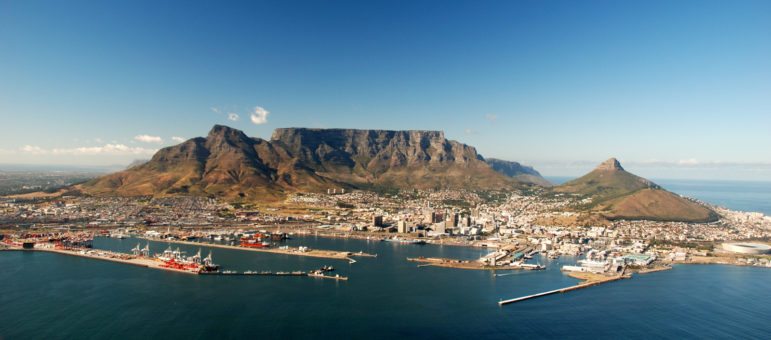 The area’s Bo-Kaap area has many mosques and is notable for the distinctive style of house favored by the descendants of the Malay slaves brought to the Cape during the Dutch occupation. Drive past Green Market Square and Company Gardens and the Castle of Good Hope. Proceed to the lower cable station of the world famous Table Mountain Cableway (weather permitting). Table Mountain is a sandstone plateau rising up above the Cape Flats. The top is approximately 3 km wide, and at its highest point, Maclears Beacon, rises to 1085 meters. Over the centuries it has become one of South Africa’s most famous landmarks.
The area’s Bo-Kaap area has many mosques and is notable for the distinctive style of house favored by the descendants of the Malay slaves brought to the Cape during the Dutch occupation. Drive past Green Market Square and Company Gardens and the Castle of Good Hope. Proceed to the lower cable station of the world famous Table Mountain Cableway (weather permitting). Table Mountain is a sandstone plateau rising up above the Cape Flats. The top is approximately 3 km wide, and at its highest point, Maclears Beacon, rises to 1085 meters. Over the centuries it has become one of South Africa’s most famous landmarks.
Robben Island
 The standard tour to Robben Island is 3.5 hours long, including the two half-hour ferry rides. Ferries depart at 9am, 11am, and 1pm, weather permitting, from the V&A Waterfront in Cape Town. The Robben Island Tour includes:
The standard tour to Robben Island is 3.5 hours long, including the two half-hour ferry rides. Ferries depart at 9am, 11am, and 1pm, weather permitting, from the V&A Waterfront in Cape Town. The Robben Island Tour includes:
- A return boat trip across Table Bay
- A visit to the infamous Maximum Security Prison
- Interaction with an ex-political prisoner
- A 45-minute bus ride with a guide providing commentary
- The opportunity to explore the Murray’s Bay Harbour precinct attractions, such as the Muslim shrine, or kramat, and the Museum Shop.
To secure a place for yourself or your group on the ferry during the busy summer season, we recommend you book early.
Kruger National Park
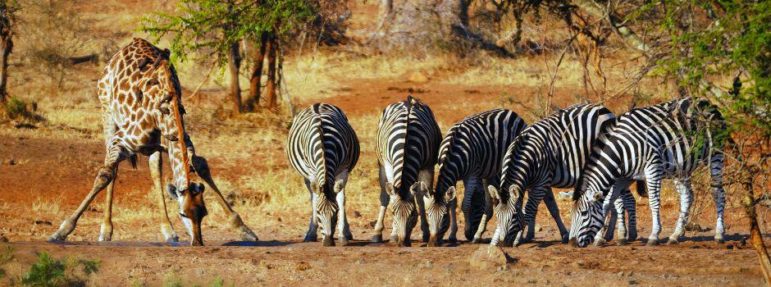 Kruger National Park is south Africa’s flagship Game reserve. In 1927 the National Parks Act declared that Kruger came into existence by merging the Sabi and Shingwedzi game reserves. In 1927 the first motorists drove through the park for a mere pound.
Kruger National Park is south Africa’s flagship Game reserve. In 1927 the National Parks Act declared that Kruger came into existence by merging the Sabi and Shingwedzi game reserves. In 1927 the first motorists drove through the park for a mere pound.
Today the park spreads across two of the country’s provinces (Limpopo and Mpumalanga) and spans an awesome 19,633 square km (7,580 sq. miles). Just the drive from North to South of the park is 60 km (220 miles), while east to west is only 5 km (40 miles).
 The park is home to Africa’s Big Five animals, the birding Big Six, as well as thousands of indigenous fauna and flora. Day guests can visit between 5:00 – 18:30 in the South African Summer months (Nov.-Feb.); 6:00 – 18:00 during Spring (Aug.- Oct.) and Autumn (Mar.-Apr.); and 6:00 – 17:30 during Winter (May-Jul). Visitors staying overnight in one of the parks’ various accommodation offerings will have broader access to the park after normal daily hours.
The park is home to Africa’s Big Five animals, the birding Big Six, as well as thousands of indigenous fauna and flora. Day guests can visit between 5:00 – 18:30 in the South African Summer months (Nov.-Feb.); 6:00 – 18:00 during Spring (Aug.- Oct.) and Autumn (Mar.-Apr.); and 6:00 – 17:30 during Winter (May-Jul). Visitors staying overnight in one of the parks’ various accommodation offerings will have broader access to the park after normal daily hours.
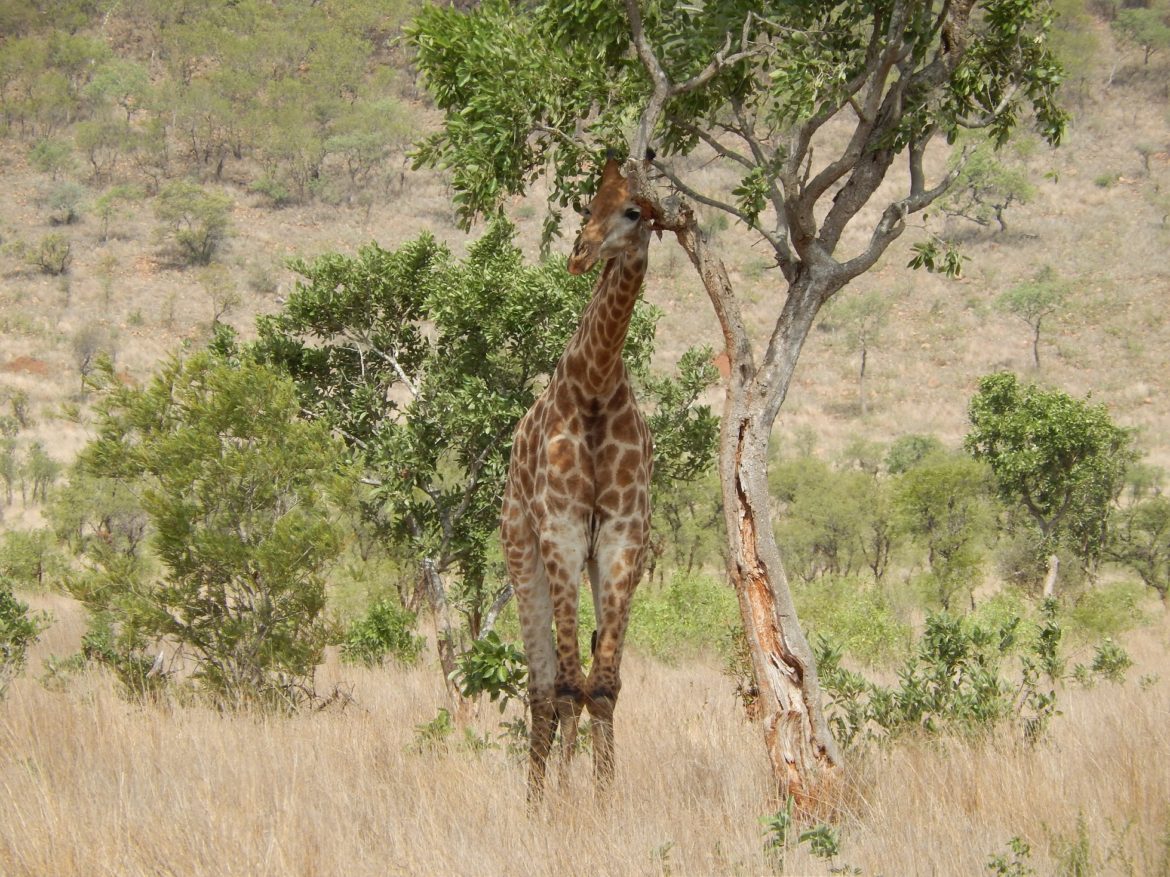 For almost a century, visitors have had access to the park and enjoyed one of the world’s premier game-viewing destinations. Kruger is home to an estimated 1,500 lions, 12,000 elephants, 2,500 buffaloes, 100 leopards, and white and black rhinos. Big Five aside, there are a myriad of other wildlife species to be admired with some 145 mammal species occurring in the park, including hippo, giraffe, zebra, cheetah and wild dog, among others.
For almost a century, visitors have had access to the park and enjoyed one of the world’s premier game-viewing destinations. Kruger is home to an estimated 1,500 lions, 12,000 elephants, 2,500 buffaloes, 100 leopards, and white and black rhinos. Big Five aside, there are a myriad of other wildlife species to be admired with some 145 mammal species occurring in the park, including hippo, giraffe, zebra, cheetah and wild dog, among others.
Keen birders will find nearly 500 bird species on the park’s list. Among the sights and sounds: the brilliantly colorful displays of the Kingfisher, the distinct call of the Fish Eagle, and the Giant Eagle Owl perched in a bare Leadwood tree.
For more information about Kruger Park, go to the San Parks website.
Need More Help?
You can find a useful reference to the tourist attractions in this article: 50 Top Tourist Attractions in South Africa.
Some tours, through Wits Journalism’s recommended travel agent, include:
- Day trips in Johannesburg to the Apartheid Museum, Constitutional Hill, the Hector Pieterson Museum in Soweto, Nelson Mandela’s house and Soweto.
- Days trips to the Sterkfontein caves and Maropeng Museum – the Cradle of Humankind.
- For those who want to view game, a two-day tour to Pilanesberg, the nearest game reserve to Johannesburg and home to the Big Five, or a longer tour to Kruger National Park.
- Travel to Cape Town, which can include a visit to Robben Island, Table Mountain and the wine route.
- There is direct access from Johannesburg to Mozambique, Zimbabwe, Botswana and Namibia.
Co-host Wits Journalism suggests these businesses in Johannesburg if you want help arranging flights, tours, or ground transport.
For flights and tours: Sandown Travel
Or email them for flights at: GIJC2017FLIGHTS@sandowntravel.co.za
And tours at: GIJC2017TOURS@sandowntravel.co.za
For transfers and ground transport: dhmtours@iafrica.com – please quote group booking code GIJC 2017.
